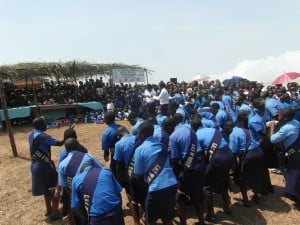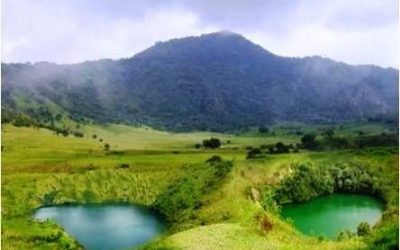
Sixteen new schools in villages surrounding the proposed Tofala Hill Wildlife Sanctuary and the proposed Mak-Betchou Chimpanzee Sanctuary have been gaining new knowledge on conservation. This follows the recent creation of 16 new environmental clubs in these schools by Education for Sustainable Development Program team of ERuDeF. The schools include Government School(G.S) Tchougie-Nkong, Catholic School(C.S) Nkong, Government Secondary School(G.S.S) Nkong-Wabane , G.S. Amboh-Besali, C.S. Besali, Government Technical College(G.T.C) Betchati, Government Bilingual Secondary School(GBSS) Emolah-Nwangong, G.S Ndu Nwangong, GS Mmouckmbie, GS Atsombie-Mmouckmbie, GTC Mmouckmbie, GS Awut- Fossimondi, GS Mbelenka in Fossimondi, GBSS Mbelenka and GS Njo’agwi-Fontem. Adding to the 31 already established clubs, 47 environmental clubs now exist to drill students, pupils and teachers on the environment.
Since December 2013 with the arrival of ERuDeF’s new team consisting of Akeh Nug and Emmanuel Ndip for Education for Sustainable Development Program, environmental education has taken a different phase especially in the subdivisions cutting across the proposed Tofala Hill Wildlife Sanctuary. Three months into the arrival of this team, this area has had several visits from the team with steaming packages of conservation lessons, sensitization and awareness raising activities, EE-club involvements, a weeklong session during the youth week jam packed with exciting activities like conservation dramas, debates, poems, songs, lessons, articles and sporting activities involving both teachers and students not leaving out pupils. The education team has been working in close collaboration with both primary and secondary schools in the area and has adopted a new strategy in environmental education which includes outdoor activities and experiential learning. This new experimental strategy has seen a team of students to a Rainforest Expedition into the Tofala forest together with ERuDeF’s bio-monitoring team to study the ecology of Great apes in the forest. The forest adjacent communities have not been left out as they have been involved in sensitization and awareness raising activities. The team envisages a subsequent change in attitudes towards best environmental and conservation practices in these communities. Rewards of these efforts have already started manifesting through the observation of more chimpanzees and gorilla signs in the proposed Sanctuary, an indication of a reduction of pressure on the forest and less hunting in this area. The team looks forward to better results as it forges ahead with more exciting plans geared towards academic understanding, acquisition of values, increased capacity, skills development and the adoption of attitudes and behaviour conducive to biodiversity preservation in the next quarter of the year.
By A. Nug



